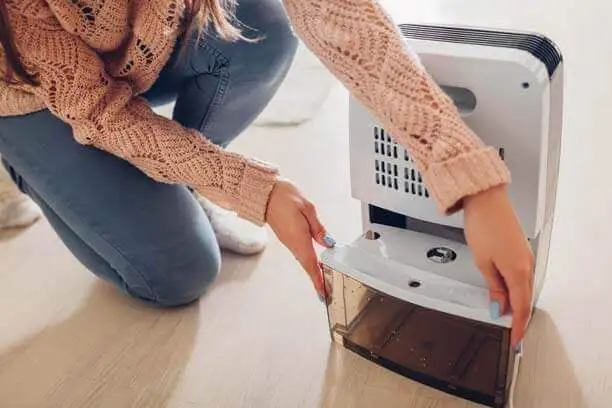Home Humidity Levels and Why They Matter


We all know that high humidity can leave you feeling sweaty, lethargic and uncomfortable, while inadequate humidity can contribute to sinus issues and dry skin. But did you know that humidity levels can affect the health of your home, too? Learn how much humidity is too much or too little, and what you can do about it.
The ideal amount of humidity is around 30-50%. If your house’s humidity is consistently higher than 50% or lower than 30%, you could be putting your home — and your health — at risk. If you have too much humidity in your home, you could face harmful mold and mildew growth, and even structural damage. It can even grow in your carpets and can be hard to eliminate. On the flip side, excessively dry indoor air can lead to warping or cracking of wood furniture and building materials.
Here’s how to achieve ideal indoor humidity levels for the comfort of your family and the structural integrity of your house.
To determine the humidity levels in your house, you’ll need to purchase several hygrometers and place them in different areas of your home. Humidity can vary throughout a house, especially from level to level, so it’s important to get good readings from various spots. Basements are especially susceptible to high humidity levels as moisture from the ground can seep through the walls.
If you start noticing symptoms of high humidity in your home, you will want to take steps to reduce your humidity levels. Here are a few methods we recommend:
Running your air conditioner not only creates a cool and comfortable house, but it can also help reduce indoor humidity. That’s because air conditioning creates cooler air and removes warm/humid air at the same time. Keeping the fan on the ON position can help by continuing to blow air around. That’s a win-win.
A whole house dehumidifier may be your best bet when looking for ways to reduce your home’s indoor humidity. As air passes through your furnace, it removes moisture. The cost of the dehumidifier and installation can range from $1,000 to $3,000, but it could help save your home from damage and harmful conditions.
Hot showers and cooking can cause warm air inside your home. The ventilation fans in bathrooms and over your stove can help to reduce the humidity. You can also reduce the temperature of your shower to limit warm moisture from producing.
Be sure you’re not adding moisture to your home by allowing leaks to come in. Leaking pipes and faucets add more moisture for your home to absorb. If you see any leaks in your ceiling or notice water collecting under pipes, take swift action to fix those issues. It’s also a good idea to be sure your gutters are free of debris and the downspouts are directed far away from your home.
A smart thermostat could be an important part of your strategy to control humidity levels in your home. For instance, the Nest Learning Thermostat has a cool to dry setting which utilizes your A/C to help dehumidify your home. When it detects a certain amount of humid air it will turn your air condtioning unit on. If the humidity level isn’t changing, it will turn the A/C off.
Did you know some houseplants can actually help absorb humidity? It’s true — plants like Boston Ferns do well in high-moisture environments. They can take in air moisture and help to lower humidity levels.
If you get a low humidity reading, you will want to take steps to increase your humidity levels, especially in colder months when the air outside is naturally drier. Here are a few easy ways to increase moisture levels in your home:
Skip the dry cycle on your dishwasher and let the steam flow out instead. Hang dry your clean laundry on an indoor clothesline.
Let a large pot of water simmer on the stove for a few hours, as long as you’re at home and able to monitor it safely. After a hot bath, leave the water in the tub to cool before draining it. This can also be done with a sink full of warm dishwater.
Pepper your home with moisture-creating houseplants — they’ll release moisture into the air through their leaves.
Add small humidifiers to rooms where extra moisture is needed. For homes in arid climates like Nevada and Arizona, consider a whole-house humidifier to add moisture to the air all year long.
Owning a home can be both rewarding and challenging at the same time. Keep these tips in mind to keep you, your family and your home safe — and connect with your local Farm Bureau agent to ensure your investment is protected.